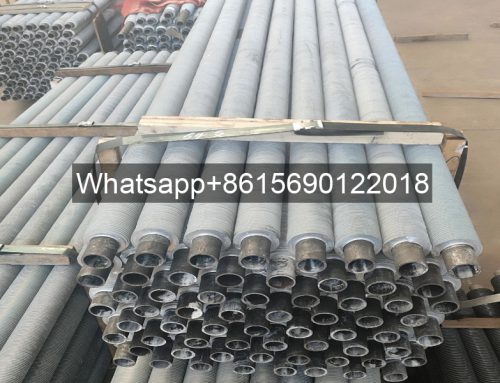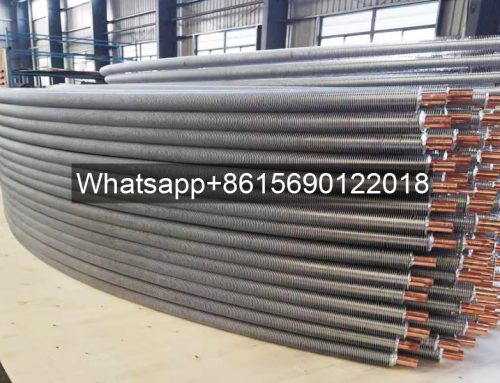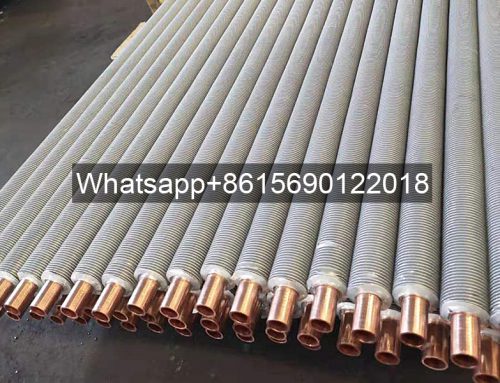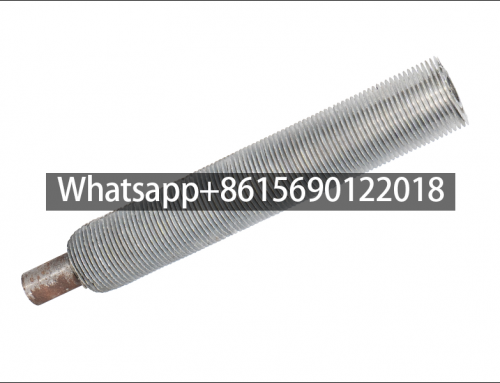Project Description
Aluminum Extruded Fin Tube Manufacturer

- Leave Your Message
Extruded Aluminum Fin Tubes

The extruded fin tubes produced by Datang form the core of nearly all our heat exchangers. Their unique “double-wall” structure endows them with remarkable durability and high heat efficiency. You have the option to select from various types of tube materials, enabling our heat exchangers to be precisely tailored to specific applications.
Moreover, in contrast to fins that are embedded in the outer wall of the tube, our extruded fin tubes are engineered to prevent corrosion between the fins and the tube. When used appropriately, our tubes are highly suitable for steam coils.
Datang manufactures extruded fin tubes through a rotary extrusion method to obtain integral fin tubes. The process involves inserting a lining into an aluminum extrusion. The extrusion is then radially compressed around the lining, and the surplus material is formed into spiral fins.
This extrusion process solidifies the fins and averts galvanic corrosion that would otherwise occur when two metal alloys are exposed to air, as seen in other fin types. Compared to similar products, our fins neither break nor unwind, and the lining remains firmly in place, thus ensuring the thermal performance of the heat exchanger.

The advantages of extruded aluminum fin tubes are as follows:
They can be easily cleaned using a high-pressure water jet without any deformation of the fins.
The tube is not mechanically stretched to attach to the fins.
They offer uniform and reliable heat transfer.
There is no galvanic corrosion between the tube and the fins.
The fins are resistant to vibration.
They are ideally suited for industrial applications.
They possess an unrivaled quality/price ratio for demanding applications.
The integral extruded finned tube achieves efficient heat transfer through metallurgical bonding process, has both mechanical strength and corrosion resistance, is widely used in petrochemical, electric power and new energy fields, and is a key technology for industrial energy conservation
In modern industrial heat exchange systems, finned tubes are widely used due to their excellent heat transfer performance, and rolled extruded finned tubes are one of the efficient and reliable enhanced heat transfer elements.
It uses special rolling and extrusion processes to tightly combine metal fins with base tubes, greatly improving heat exchange efficiency and becoming a key component in the fields of petrochemical, electric power, refrigeration, etc.
The manufacturing process of rolled extruded finned tubes combines mechanical rolling and metal plastic deformation technology.
The base tube (usually a steel tube or a copper tube) is fixed on a special equipment, and then the high-speed rotating rolling wheel applies pressure to the tube wall to extrude the metal material outward to form a continuous spiral fin.
Since this process uses cold processing or hot processing, a metallurgical bond is formed between the fin and the base tube, avoiding the thermal stress problem that may be caused by welding, and ensuring higher structural strength and thermal conductivity.

Technical advantages: Why choose integral extruded finned tubes?
High heat transfer efficiency:
The fins greatly increase the heat exchange surface area, allowing heat to be transferred to the surrounding medium more efficiently, especially suitable for gas-liquid heat exchange scenarios.
Excellent mechanical strength:
The rolling process makes the fins and the base tube integrated, avoiding the risk of welded fins falling off, and is suitable for high pressure and high temperature conditions.
Strong corrosion resistance:
Due to the absence of welds, corrosion weak points are reduced, and with surface coatings or special materials (such as stainless steel, aluminum, etc.), it can adapt to harsh environments.
Strong adaptability:
The fin height, density and spiral angle can be adjusted according to needs to optimize the heat exchange performance under different working conditions.

Aluminum extruded finned tubes are widely used in:
Petrochemical industry:
used for heating furnaces and waste heat recovery systems;
Power industry:
boiler economizers, air preheaters;
Refrigeration and air conditioning:
core components of condensers and evaporators;
New energy:
solar thermal collection systems, ground source heat pumps, etc.
Although extruded finned tubes have superior performance, their manufacturing cost is high and the plasticity requirements of the material are strict. Some brittle metals (such as cast iron) are difficult to use this process.
In the future, with the advancement of precision rolling technology and new alloy materials, its application range is expected to expand further.
Extruded finned tubes have become an important part of modern heat exchange technology due to their advantages such as efficient heat transfer and stable structure.
With the increase in industrial energy-saving needs, the development of its manufacturing process and material science will continue to promote the advancement of this technology and provide reliable support for more efficient energy utilization.





